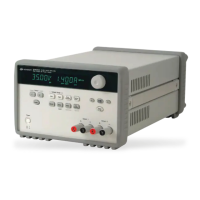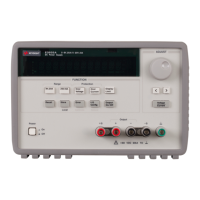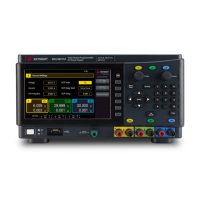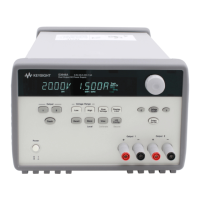Front Panel Menu Reference SCPI Command
Select Protect\OCP
Check Enable OCP. Then press Select.
To enable OCP:
CURR:PROT:STAT ON
Delay OCP
You can specify an OCP delay to prevent momentary output settings, load, and status changes from
tripping the over-current protection. In most cases these momentary conditions would not be
considered an over-current protection fault, and having an OCP condition disable the output when
they occur would be a nuisance. Specifying an OCP delay lets the OCP circuit ignore these momentary
changes during the specified delay period. Once the OCP delay time has expired and the over-current
condition persists, the output will shut down.
The following selections are available to start the over-current delay timer:
Settings Change this starts the over-current delay whenever a command changes the output
settings. It includes changes made by the transient system so that the timer is started at each list step
and at each Arb output change. It also includes voltage and current slew changes, so that the timer is
restarted throughout the entire slew time.
Current Limit starts the over-current delay timer by any transition of the output into current limit.
The delay can be programmed from 0 to 0.255 seconds. You can specify if the OCP delay timer is
started by any transition of the output into current limit, or only at the end of a settings change in
voltage, current, or output state.
Front Panel Menu Reference SCPI Command
Select Protect\OCP
Enter a delay value. Then press Select.
By default, the delay timer will be started by an
output "Settings Change".
Check "CCTransition" to start the delay timer by
ANY output transition into CL mode.
To specify a 10 millisecond delay:
CURR:PROT:DEL 0.01
To start the delay timer by an output settings change:
CURR:PROT:DEL:STAR SCH
To start the delay timer by ANY output transition into
CL mode:
CURR:PROT:DEL:STAR CCTR
Factors that influence how long the output settings or load change may last include: difference
between old output value and new output value, the current limit setting, and the load capacitance in
voltage priority mode or load inductance in current priority mode. The delay required must be
determined empirically; the output programming-response time characteristics may be used as
guidelines.
Also note that the time it takes the output to go into current limit (CL) varies - depending on the
magnitude of the over-current condition compared to the current limit setting. For example, if the
over-current is only slightly greater than the current limit setting, it may take several tens of
milliseconds for the output to set the CC status bit. If the over-current is significantly greater than the
current limit setting, it may only take a few hundred microseconds or less for the output to set the CL
status bit. To determine when the output will shut down, you must add the time it takes for the CL
Keysight RP7900 Series Operating and Service Guide 121
4 Using the Regenerative Power System

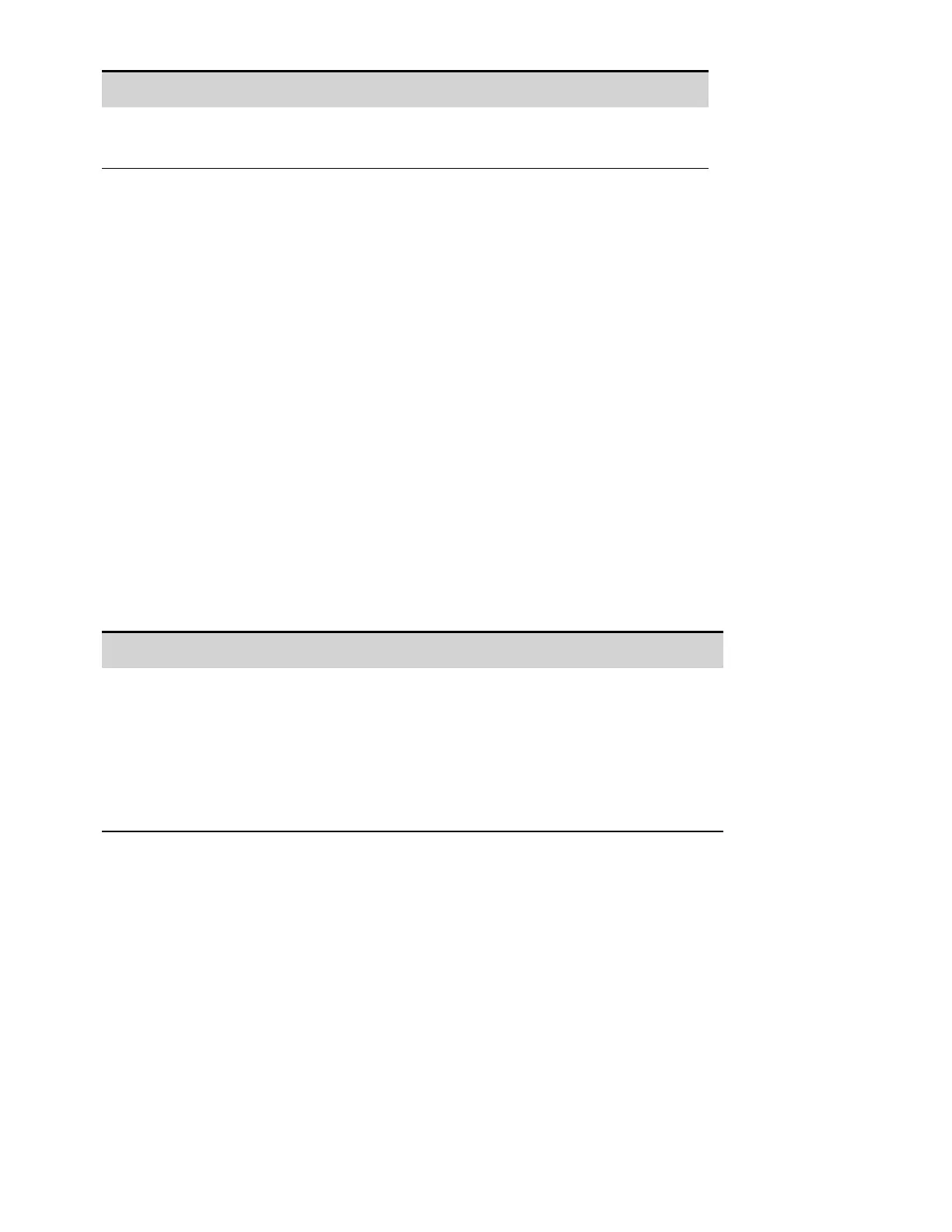